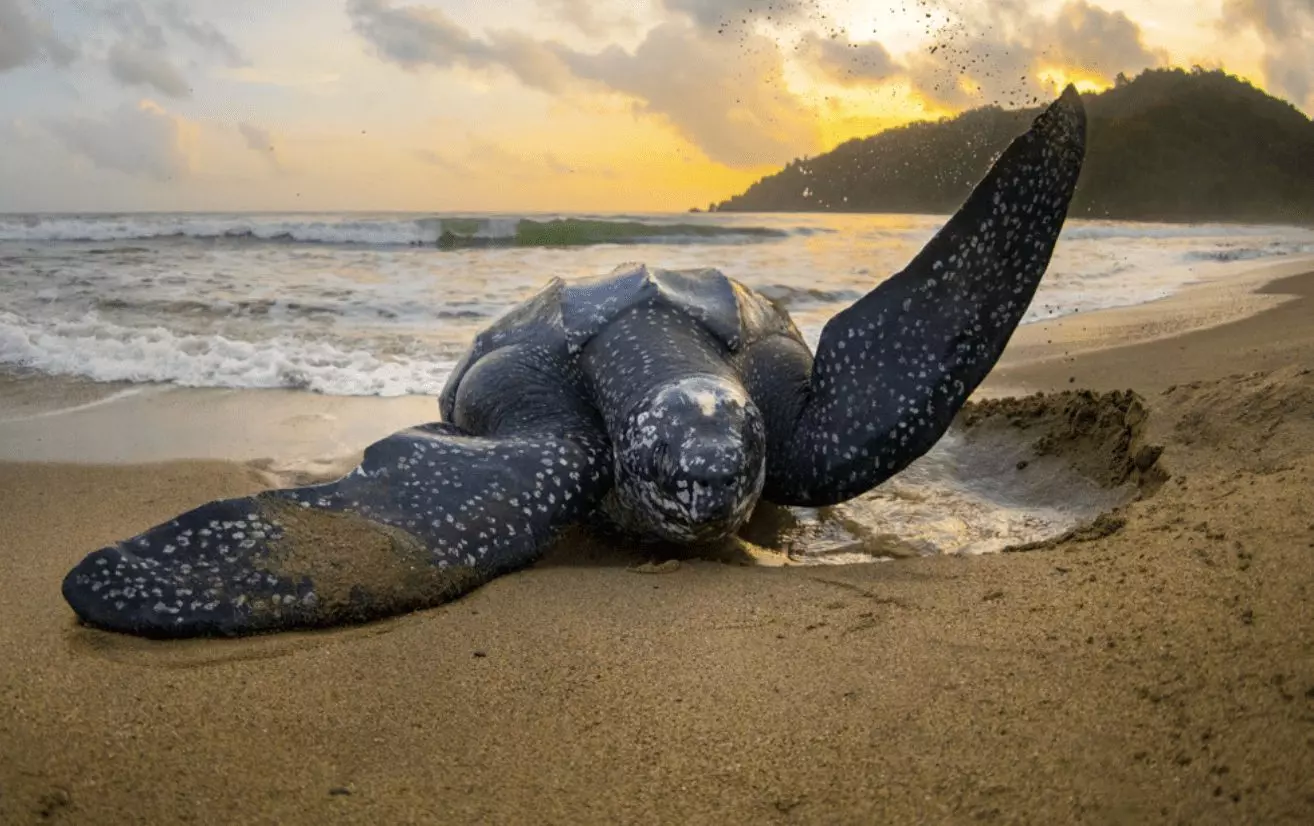Costa Rica’s natural wonders are a treasure trove for wildlife enthusiasts and eco-conscious travelers. In this edition of “Nature in Focus,” we turn our attention to one of the most majestic and endangered creatures that call Costa Rica home—the Leatherback Turtle. These magnificent marine reptiles nest at Playa Grande, which is also home to the renowned Parque Marino Las Baulas, check out Parque Marino Las Baulas website here.
Join us as we delve into the world of Leatherback Turtles, their status as an endangered species, the best time to witness their nesting rituals, how to book a tour for a once-in-a-lifetime experience, and explore the rich biodiversity of Parque Marino Las Baulas.
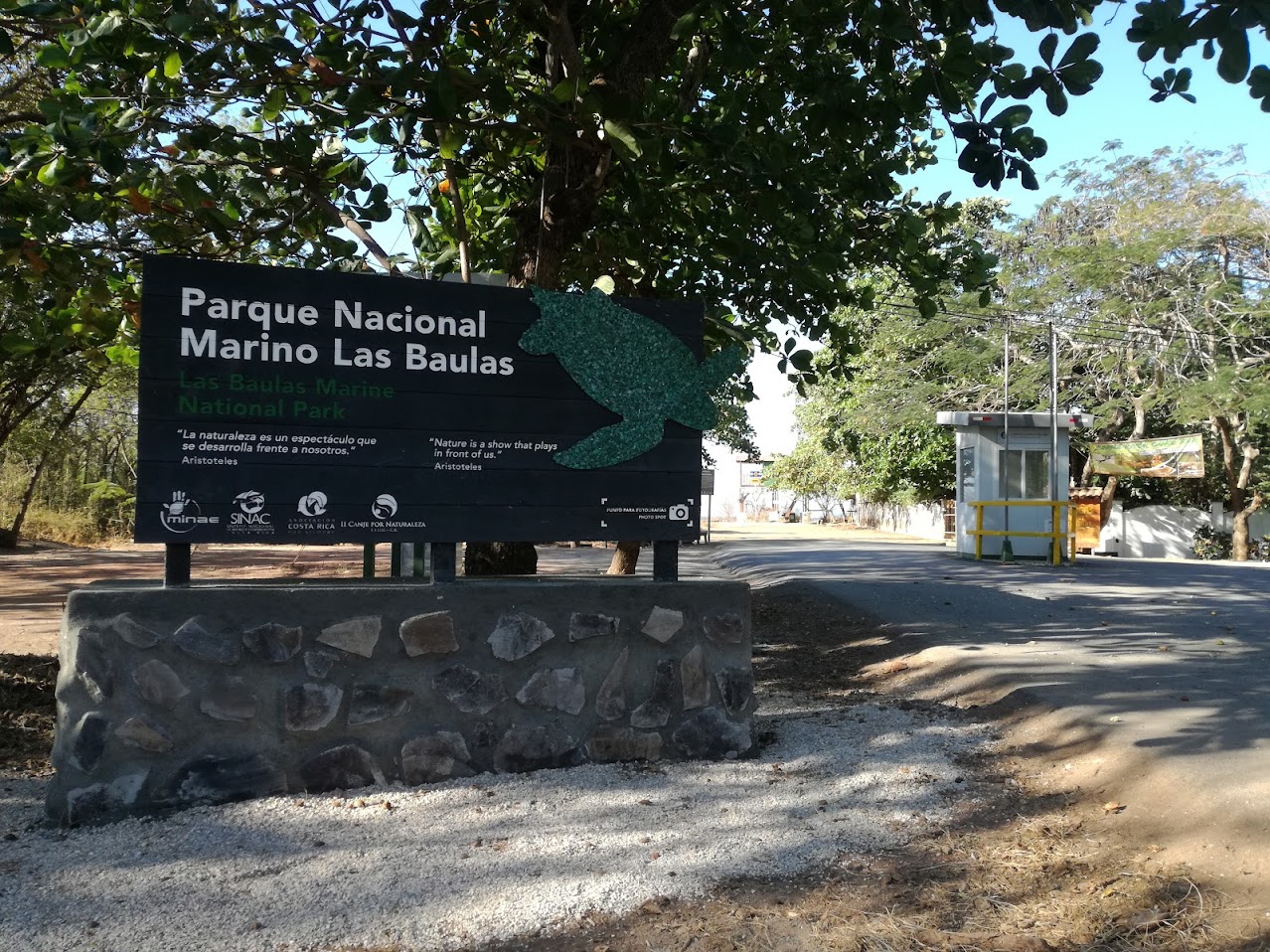
Majestic Giants of the Ocean: Leatherback Turtles in Costa Rica
Leatherback Turtles, scientifically known as Dermochelys coriacea, are the largest sea turtles on the planet. These magnificent giants have been swimming the Earth’s oceans for over 100 million years, making them a living testament to Earth’s ancient history. Their distinctive feature is their leathery, rubbery skin, which sets them apart from other sea turtle species.
Leatherbacks are known to grow up to 7 feet (2 meters) in length and can weigh as much as 2,000 pounds (900 kilograms). These incredible creatures are known for their migratory habits, traveling thousands of miles between their nesting and foraging grounds. They primarily feed on jellyfish, helping to control jellyfish populations in the oceans.

A Precarious Existence: Leatherback Turtles in Costa Rica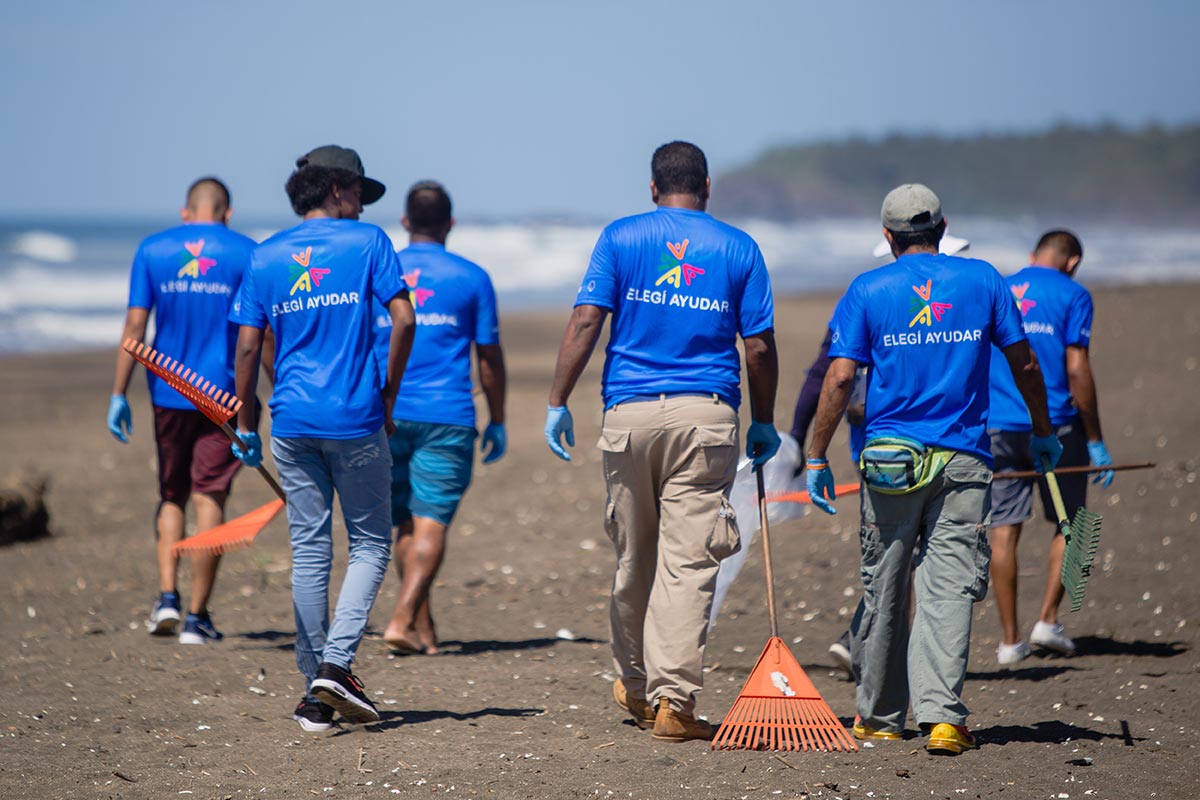
Despite their ancient lineage and incredible adaptations, Leatherback Turtles face a perilous future. They are listed as critically endangered by the International Union for Conservation of Nature (IUCN). Several factors contribute to their endangered status:
1. Habitat Loss: Coastal development and pollution have led to the destruction of their nesting habitats.
2. Entanglement in Fishing Gear: Leatherbacks often become unintentional victims of fishing operations, as they get entangled in fishing nets and lines.
3. Marine Debris: Ingesting plastic and other marine debris can be fatal for these gentle giants.
4. Climate Change: Rising temperatures affect the sex of turtle hatchlings, potentially leading to skewed sex ratios and reduced reproductive success.
Efforts are underway to protect Leatherback Turtles and their nesting sites, and Parque Marino Las Baulas plays a vital role in these conservation efforts.
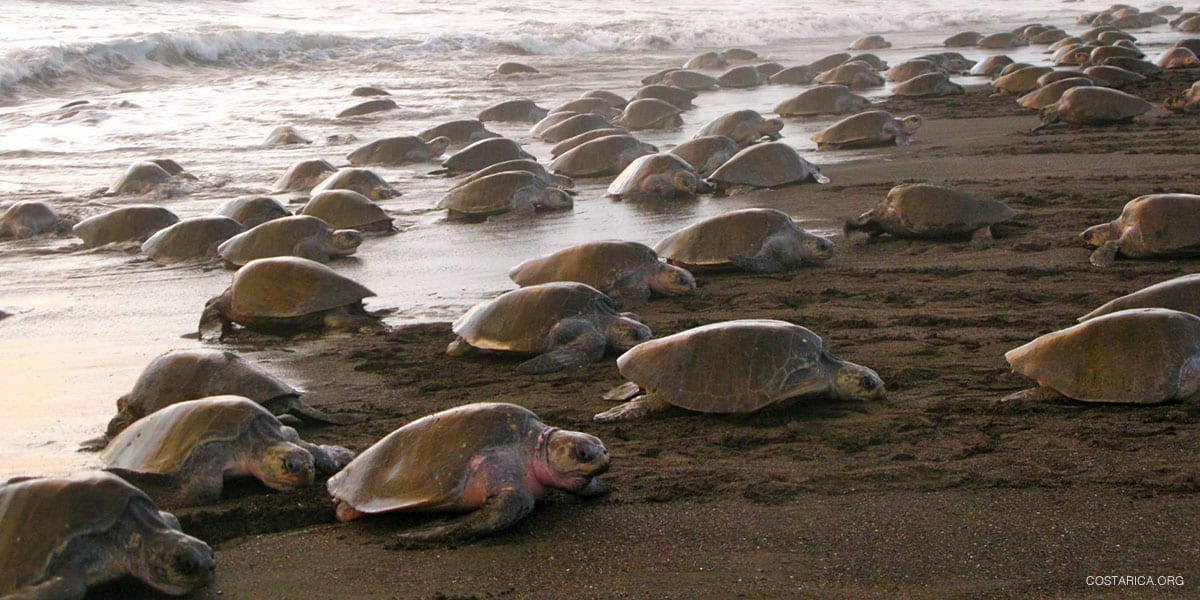 When to See Them: The Magic of Nesting Season
When to See Them: The Magic of Nesting Season
The best time to witness the awe-inspiring nesting rituals of Leatherback Turtles in Costa Rica is during their nesting season, which typically runs from October to March. During this time, female Leatherbacks emerge from the depths of the Pacific Ocean and make their way onto the beaches, where they dig deep nests and lay their eggs.
To maximize your chances of witnessing this incredible event, it’s advisable to visit Playa Grande and Parque Marino Las Baulas during the peak nesting months of November to February. The precise timing of nesting activity can vary from year to year, so it’s a good idea to check with local tour operators or park authorities for up-to-date information on nesting schedules.
Guided Tours for an Unforgettable Experience: Leatherback Turtle Tours in Costa Rica
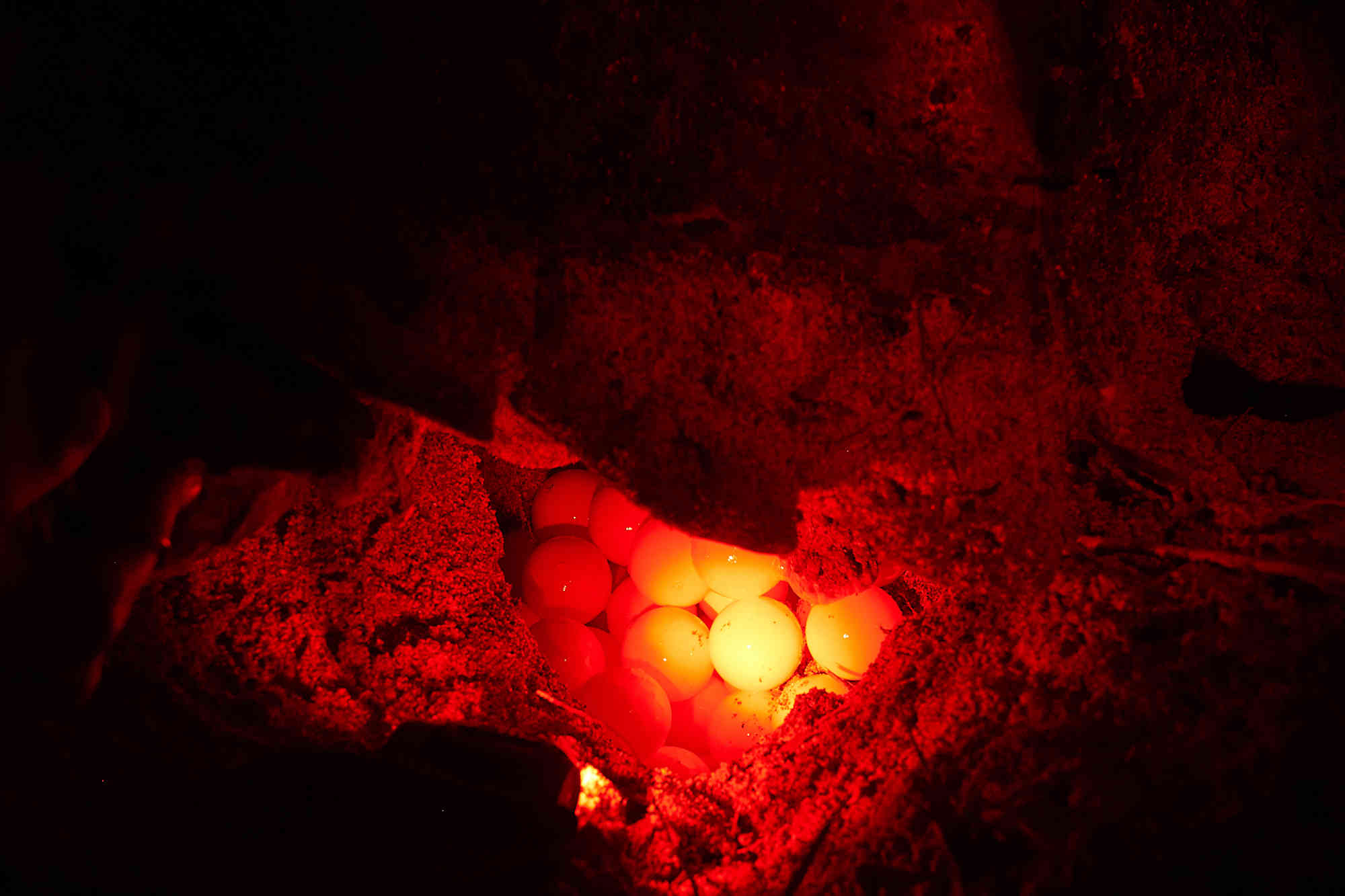 Booking a guided tour to witness Leatherback Turtles nesting at Playa Grande is the best way to ensure a memorable and educational experience. Coastal Realty Property Management (CRPM) offers guided tours that provide an opportunity to observe these gentle giants while respecting their natural habitat.
Booking a guided tour to witness Leatherback Turtles nesting at Playa Grande is the best way to ensure a memorable and educational experience. Coastal Realty Property Management (CRPM) offers guided tours that provide an opportunity to observe these gentle giants while respecting their natural habitat.
Here’s how you can book a tour:
1. Check Availability: Contact CRPM well in advance to check the availability of tours during your desired dates.
2. Plan Your Visit: Coordinate your visit to Playa Grande with the peak nesting season, typically from November to February.
3. Respect Wildlife Guidelines: Follow the guidelines provided by CRPM and park authorities to ensure minimal disruption to the nesting turtles and their habitat.
4. Prepare for the Experience: Bring necessary supplies such as water, sunscreen, and insect repellent, and be prepared for a night-time adventure as Leatherback Turtles typically nest at night.
Leatherback nesting tours are within driving distance of our guests staying in our Avellanas vacation rentals, Hacienda Pinilla, Tamarindo, and any of CRPM’s properties on the Gold Coast of Costa Rica.
For our guests staying in our Playa Grande vacation rentals, you may not be on the beach without a guide during Leatherback nesting season. You will need to walk along the road to the ranger station if you have a tour booked and don’t want to drive.
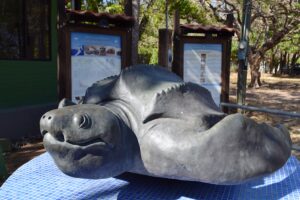 A Sanctuary for Leatherback Turtles: Parque Marino Las Baulas in Costa Rica
A Sanctuary for Leatherback Turtles: Parque Marino Las Baulas in Costa Rica
Parque Marino Las Baulas, located near the town of Tamarindo in Guanacaste, is a protected area dedicated to the conservation of Leatherback Turtles in Costa Rica. Named after the turtles’ large nests, or “baulas” in Spanish, this park plays a crucial role in the survival of these majestic creatures.
Key highlights of Parque Marino Las Baulas include:
– Nesting Beaches: The park encompasses several nesting beaches, with Playa Grande being the most famous. These beaches are vital for Leatherback Turtles to lay their eggs. After you are finished at Playa Grande it is only a short trip up to the more secluded beaches of Playa Ventana and Playa Carbon
– Ranger-Guided Tours: The park offers ranger-guided tours to educate visitors about Leatherback Turtles, their nesting habits, and the importance of conservation.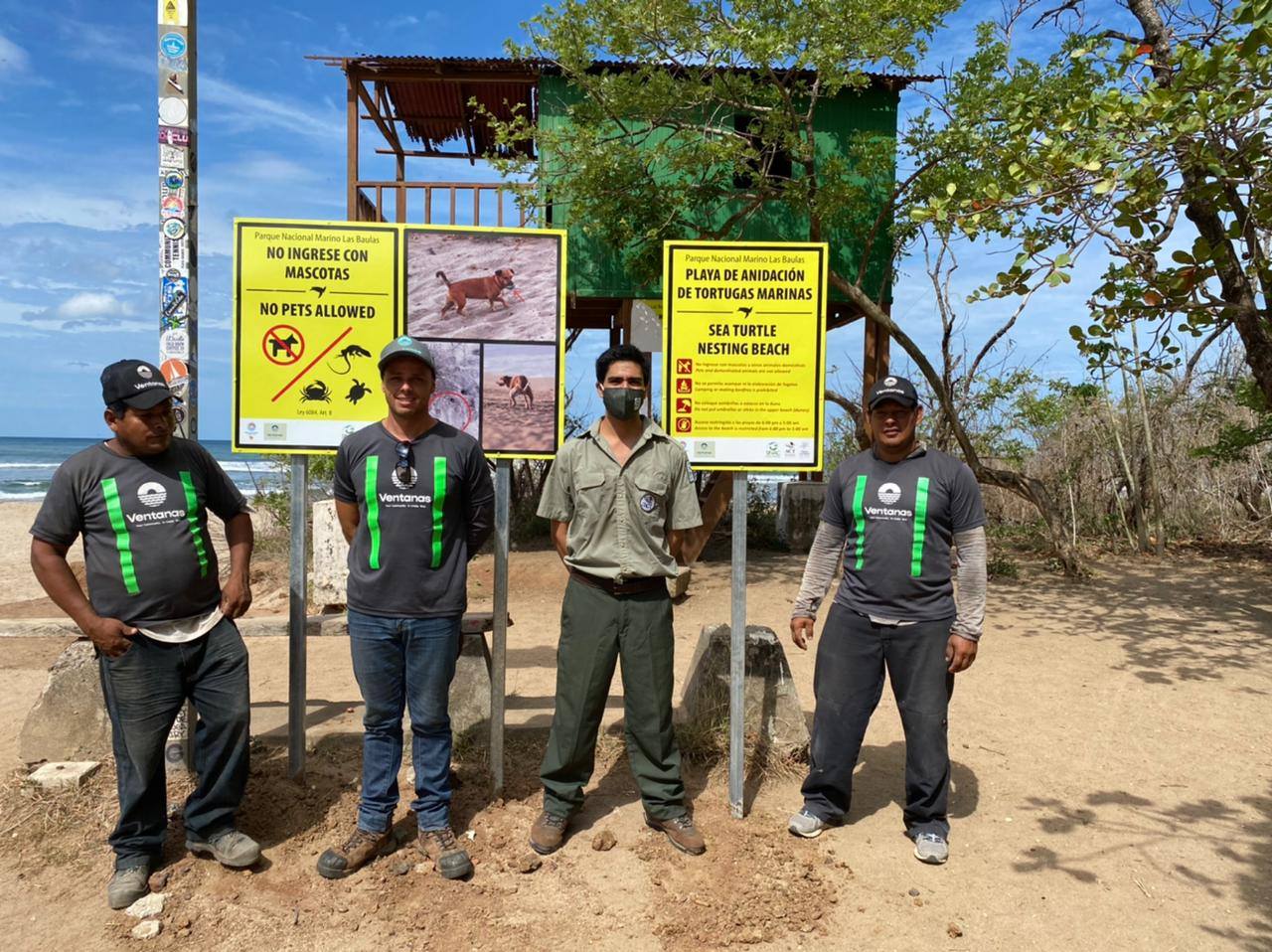
– Visitor Center: The park has a visitor center where you can learn more about the local biodiversity, including the turtles, and the efforts to protect them.
– Conservation Initiatives: Parque Marino Las Baulas actively participates in research and conservation programs aimed at preserving Leatherback Turtles and their habitat.
Visiting Parque Marino Las Baulas not only provides an opportunity to witness the remarkable nesting rituals of Leatherback Turtles but also supports the park’s conservation efforts. It’s a place where you can connect with nature, learn about the importance of protecting endangered species, and make lasting memories.
Conclusion
In the heart of Costa Rica’s pristine natural beauty, an extraordinary opportunity awaits – the chance to witness one of the ocean’s most ancient and endangered creatures, the Leatherback Turtle. Playa Grande and Parque Marino Las Baulas offer a unique and unforgettable experience, allowing travelers to connect with nature, learn about conservation efforts, and contribute to the protection of these gentle giants. By booking a guided tour with Coastal Realty Property Management (CRPM), you can immerse yourself in the world of Leatherback Turtles, ensuring that your encounter is not only memorable but also respectful of their fragile existence. So, plan your visit, support conservation, and become part of the global effort to safeguard the future of Leatherback Turtles in Costa Rica’s pristine waters. Witness the magic of Leatherback Turtles in Costa Rica, a true testament to the wonders of nature.
